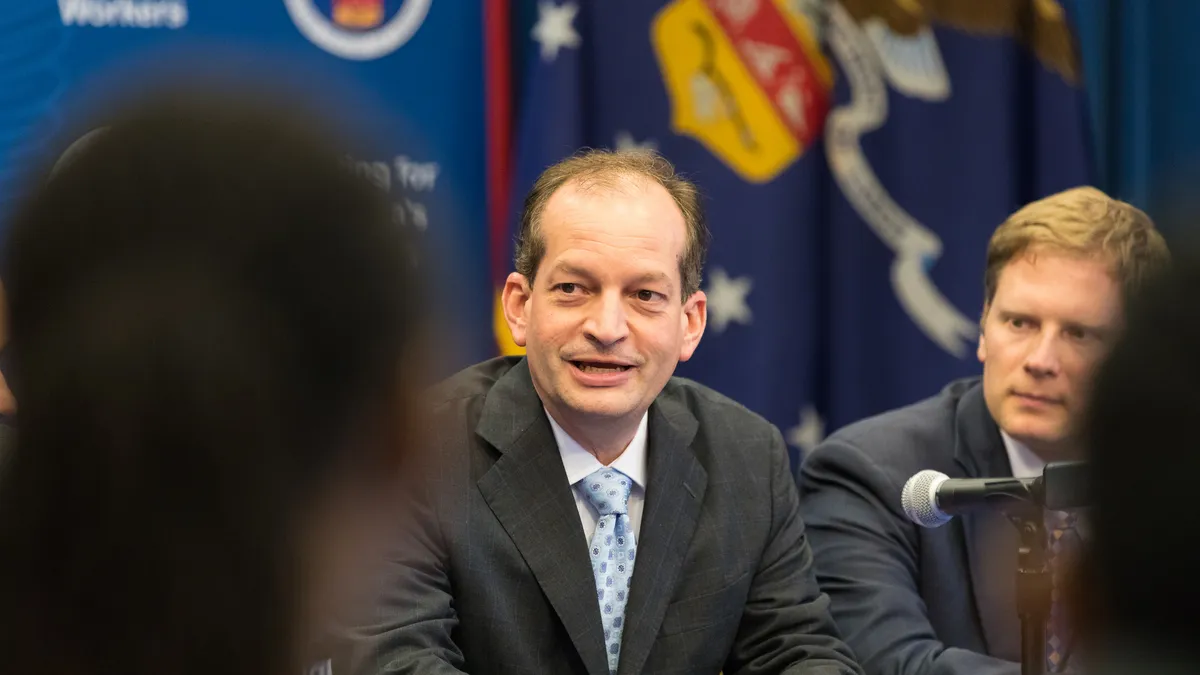Dive Brief:
- After more than a year, a consolidated lawsuit against the Occupational Safety and Health Administration's (OSHA) silica rule is "close to a resolution," Labor Secretary Alexander Acosta told the House Education and the Workforce Committee Wednesday, according to Safety+Health magazine.
- Acosta also said the agency is refining its electronic record-keeping rule, "Improve Tracking of Workplace Injuries and Illnesses," which recently announced its Dec. 1 deadline for employers in high-risk industries — like construction — to submit electronically their 2016 injury and illness data.
- Following questions about OSHA's role in compliance and enforcement, Acosta noted that he had requested more funding for Voluntary Protection Programs, which acknowledge employers who have implemented effective safety programs, and would seek out criminal prosecution for certain cases of repeated or willful violations.
Dive Insight:
Since its introduction more than four years ago, OSHA's silica rule has been a source of contention among industry stakeholders. Though many have pushed for stricter enforcement of the rule, other groups, including the Associated General Contractors of America, say tighter guidelines are unwarranted. In September, those plaintiffs brought their case before a federal appeals court where they were met with skepticism by a panel of judges who said it would be difficult for the groups to prove OSHA had failed to offer enough evidence to necessitate the rule.
Industry-wide challenges may have been unsuccessful in attempts to unravel the rule, but they were enough to buy construction companies more time to prepare for its new compliance standards. After a number of delays in its enforcement — including a 90-day period to give OSHA more time to offer substantive guidance and another full 30 days before the agency would issue fines and citations — the measure went into full effect in late October.
Before he took office, President Donald Trump played into industry concerns over the rigidity of regulatory standards, touting a firm stance of deregulation. As such, OSHA's role under the Trump administration has been closely watched throughout much of the last year.
During his first few months in office, Trump made good on his word, attempting to or succeeding in canceling 860 Obama-era rules and regulations. The administration's efforts to revoke controversial policies such as overtime expansion and the persuader rule, in addition to its successful rollback of the "blacklisting" rule, have given many in the industry a renewed sense of confidence.
According to Ben Brubeck, vice president of regulatory, labor and state affairs for the Associated Builders and Contractors, "Some of the old regulations that were coming out the last year of the Obama administration that would have impacted a lot of our members have died on the vine before they've gone into effect."












